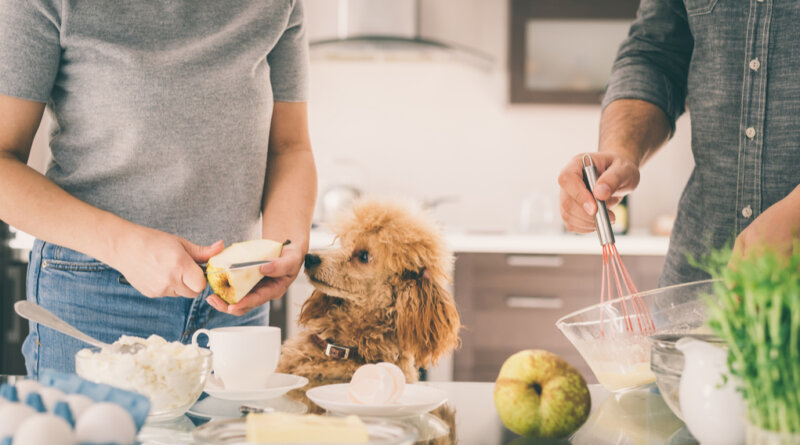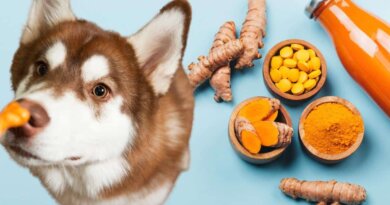Ingredients in Homemade Dog Food – The Do’s and Don’ts – Top Dog Tips
Choosing the ingredients to include in your homemade dog food can sometimes be challenging. You need to make sure that what you are adding is safe for your canine pet.
As pet owners, making homecooked meals puts your mind at ease because you know what kind of ingredients go into your pet’s stomach.
It may be easy to prepare homemade dog food, but here are a few do’s and don’ts that you need to know before you get started with putting anything into your dog’s meal.
Should I Cook My Dog’s Meal?
Cooking your dog’s meal might sound exciting, but you should not take it lightly.
There are a lot of talks that homemade food is better than commercial ones. While this is true in some cases, still, there is not enough scientific evidence to prove the claim.
With all these uncertainties about homemade dog food, there are still many benefits coming from it.
Meals built on whole ingredients have better outcomes in the long run, and preparing your dog’s meal is one way to ensure that you are feeding your dog with a variety of healthy whole foods.
However, it’s important to remember that homemade dog food can only be nutritional if you make it nutritious.
Ingredients in Homemade Dog Food – The Do’s
- Feed your dog with plenty of raw meat, raw bones, animal fat, and cartilage.
- Give him whole, unprocessed foods.
- Allow your dog to eat whole food meaty dog treats but always read the label as others may contain chemicals and preservatives.
What Ingredients to Use in Homemade Dog Food?
The ingredients must be fresh and free from additives when making homemade dog food.
Protein
Aside from beef, there are many options to fulfill the dietary protein requirements. So, any high-quality muscle or organ protein is okay.
You can choose from any of these protein sources to add to your dog’s meal:
- Beef – choose either ground or lean (cut in small strips)
- Turkey – easy to digest
- Lamb – has more fats than other meats
- Chicken – easy to purchase and is affordable
- Rabbit and Venison – suitable for dogs with allergies
- Fish – mackerel or herring (should not be more than once or twice a week)
- Eggs – feed in moderation
- Beans – lima beans or kidney beans (should not replace the meat protein)
Carbohydrates
Carbohydrates provide fiber for healthy digestion for dogs. Carbs that are okay for dogs include:
- Brown or White Rice (cooked)
- Sweet or White Potatoes (boiled)
- Pasta (without oil or salt)
- Yams
- Oatmeal
Vegetables
Dogs can eat vegetables. However, some vegetables are not safe for them to eat.
So, here are the vegetables that you can let your dog eat freely:
- Green beans
- Spinach
- Cauliflower
- Carrots
- Broccoli
- Brussels sprouts
- Green peas
- Zucchinis
- Celery
- Cucumbers
- Pumpkin
Ingredients in Homemade Dog Food – The Don’ts
- Don’t feed your dog with high carbohydrates.
- Avoid highly processed foods and dog treats.
- Never let your dog eat a vegetarian diet.
- Don’t use unsafe ingredients in your dog’s meal.
What Ingredients to Avoid in Homemade Dog Food?
When making dog food at home, it’s essential to know what food is harmful to our pets, as this can be deadly.
Do not add the following ingredients to your home-cooked meal:
- Chocolate
- Macadamia Nuts
- Walnuts
- Avocados
- Raisins
- Onion
- Garlic
- Spices and herbs
- Coffee
- Raw Yeast Donut
Also, never feed any food that already contains mold or is already spoiled. The rule of thumb is that if it’s dangerous for you to eat, your pet is equally hazardous to consume.
What Ingredients to Limit?
Although some ingredients are okay for dogs, it’s still best to limit the usage of the following:
- Added Salt
- Dairy Products
- Cooking oils
- Corn
- Butter
Tips: Choosing the Right Ingredients in Making Homemade Dog Food
First Tip: Don’t add salt, pepper, or herbs and spices. Dogs don’t need seasoning as humans do.
Second Tip: Fresh vegetables are cheaper than canned or frozen vegetables. Other than that, fresh veggies have more vitamins at their peak ripeness.
Third Tip: When using canned vegetables, get the ones with lower salt content.
Fourth Tip: Be mindful when feeding your dog with human leftovers. These leftovers might contain butter, seasonings, or other ingredients that are not good for your dog.
Summary: Ingredients in Homemade Dog Food
Commitment is a must in feeding homemade food to your dog because once he has already tasted fresh ingredients, there’s a chance that he won’t have an interest in commercial foods.
Therefore, it would be best to carefully choose ingredients that can benefit your pet and genuinely meet his nutritional needs. Also, it’s best to consult a veterinarian before starting the meal diet you want for your pal.
Healthy ingredients in your homemade dog food can be great, but an unbalanced diet can result in health problems.
READ NEXT: How to Substitute Ingredients in Homemade Dog Food Recipes
Related






